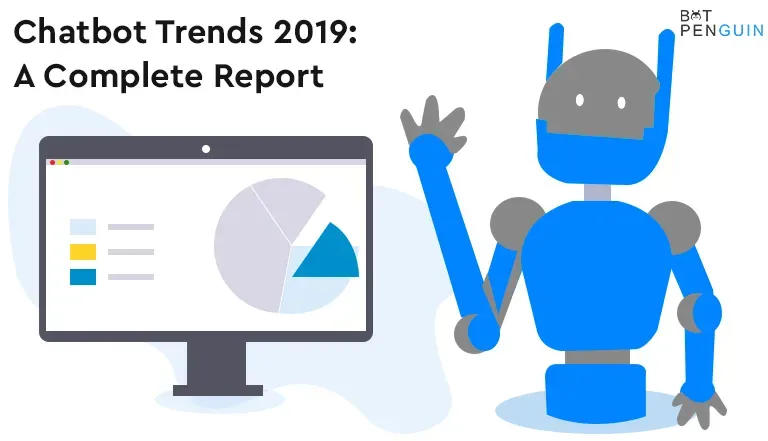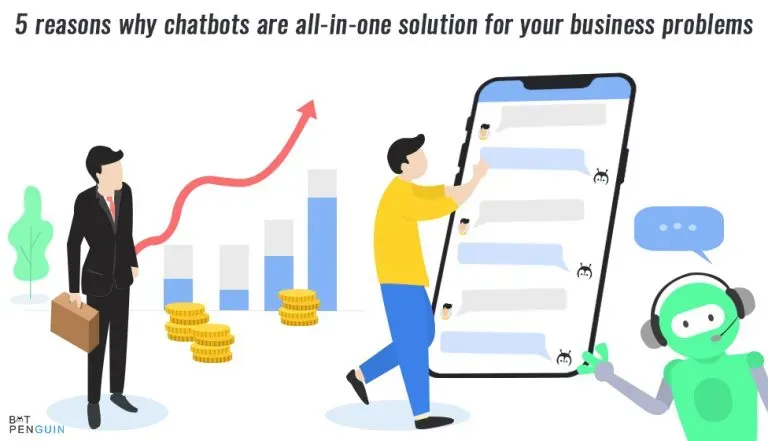Chatbots have revolutionized how businesses interact with customers, providing 24/7 support and assistance without human intervention.
However, integrating them with other tools and platforms is crucial to leverage chatbots powerfully.
Chatbot integrations enable businesses to streamline workflows, enhance productivity, and deliver a seamless customer experience across multiple channels.
In this ultimate guide to chatbot integrations, we will explore the benefits of integrating chatbots with other tools and platforms, the different types of integrations available, and the best practices for implementing and customizing them.
We will also examine case studies of successful chatbot integrations and discuss their future and their impact on businesses and users.
By the end of this guide, you will have a comprehensive understanding of how chatbot integrations can help you achieve your business objectives and deliver a superior customer experience.
Chatbot Integrations and their Benefits
Chatbot integrations offer a range of benefits for businesses and users alike. Here are some critical advantages of integrating chatbots with other tools and platforms:
Enhanced productivity
Chatbot integrations can help businesses save time and improve productivity by automating repetitive and time-consuming tasks.
Seamless customer experience
Integrating chatbots with other communication channels such as email, SMS, and social media can provide a seamless and consistent customer experience, regardless of the channel used.
Improved Data collection and analysis
Chatbot integrations can help businesses collect and analyze customer data more effectively, enabling them to gain insights into customer behavior and preferences.
Cost savings
Chatbot integrations can help businesses save costs by reducing the need for human intervention and support.
Increased customer satisfaction
By providing 24/7 support and assistance, chatbot integrations can improve customer satisfaction and loyalty.
Chatbot integrations can provide a range of benefits for businesses, enabling them to streamline their workflows, enhance productivity, and deliver a superior customer experience.
Types of chatbot integrations
Several types of chatbot integrations are available, each serving a specific purpose. Here are some of the most common types of chatbot integrations:
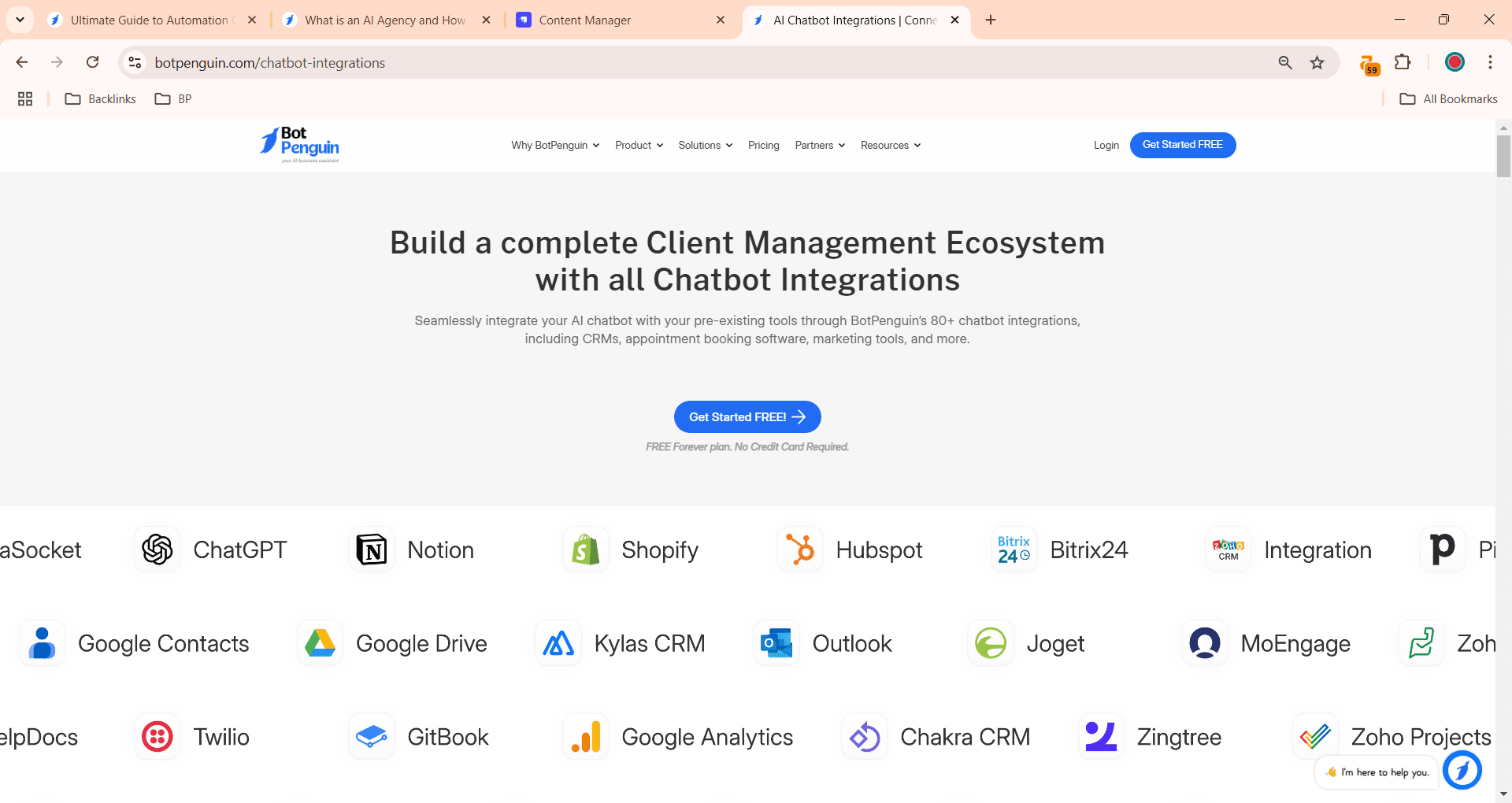
Communication integrations
Chatbots can be integrated with various communication channels, such as email, SMS, and social media, to provide a seamless customer experience across multiple channels.
For example, a chatbot integrated with Facebook Messenger can respond to real-time customer queries and complaints.
CRM integrations
Chatbots can be integrated with Customer Relationship Management (CRM) systems such as Salesforce and HubSpot to automate lead qualification, customer segmentation, and personalized messaging.
For example, a chatbot integrated with Salesforce can automatically create new leads and update existing records.
E-commerce integrations
Chatbots can be integrated with e-commerce platforms such as Shopify and Magento to provide product recommendations, order tracking, and personalized shopping experiences.
For example, a chatbot integrated with Shopify can help customers browse products, add items to their cart, and complete the checkout process.
Analytics integrations
Chatbots can be integrated with tools like Google Analytics and Mixpanel to track user behavior, measure engagement, and improve customer experiences.
For example, a chatbot integrated with Google Analytics can track how users interact with the chatbot and identify areas for improvement.
Chatbot integrations can serve various purposes, from providing a seamless customer experience to improving data analysis and insights.
Businesses can choose the type of integration that best aligns with their objectives and goals.
Steps to integrate chatbots with automation solutions and platforms
Integrating chatbots with other tools and platforms requires careful planning and execution. Here are the steps involved in integrating chatbots with different devices and platforms:
Assess your business needs and objectives
Before integrating chatbots with other tools and platforms, it's essential to identify your business needs and goals.
Consider the channels where your customers are most active, the types of data you want to collect, and the tasks you want to automate.
Select the correct integration solutions
Several integration solutions are available, each with features and functionalities. Choose an integration platform that aligns with your business needs and objectives.
We highly recommend BotPenguin, an almighty chatbot platform that can house 60+ integrations and can tune visitors into customers in mere seconds.
Customize the integration solutions
Once you have selected the integration solutions, customize the integration according to your specific requirements.
This may involve configuring the chatbot's behavior, integrating it with different channels, and setting up data collection and analysis.
Test and troubleshoot the integration solutions
Test the integration thoroughly to ensure it works as intended. Identify and address any issues or bugs that arise during testing.
Launch and monitor the automation solutions
Once it is complete, launch it and monitor its performance regularly. Keep track of critical metrics, such as engagement, conversion rates, and customer satisfaction, and adjust as needed.
Following these steps, businesses can integrate chatbots with other tools and platforms to streamline workflows and deliver a seamless customer experience.
Best practices for chatbot integration
Integrating chatbots with other tools and platforms requires careful planning and execution. Here are some best practices for chatbot integrations:
Choose the correct automation solutions
Choose one that aligns with your business needs and objectives. Consider the platform's features, pricing, and support options before deciding.

Customize the chatbot's behavior
Customize the chatbot's behavior according to your specific requirements. This may involve setting up predefined responses, configuring the chatbot's conversational flow, and defining its scope.
Integrate the chatbot with relevant channels
Integrate the chatbot with relevant communication channels like email, SMS, and social media. This can provide a seamless and consistent customer experience across multiple channels.
Train the chatbot
Train the chatbot to understand and respond to customer queries and complaints effectively. This may involve creating a knowledge base, training the chatbot using machine learning algorithms, and monitoring its performance.
Monitor and optimize performance
Monitor the chatbot's performance regularly and optimize it as needed. This may involve analyzing key metrics such as engagement, conversion rates, and customer satisfaction, identifying areas for improvement, and making adjustments accordingly.
Case studies of successful automation solutions
Chatbots have become a powerful tool for businesses looking to improve customer experience and streamline workflows. Here are some examples of successful chatbot integrations:
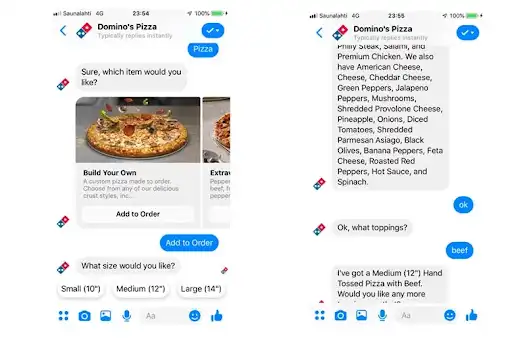
Mastercard
Mastercard integrated a chatbot with its Facebook Messenger account to provide real-time customer support and transaction assistance.
The chatbot handled various customer queries, including account balance inquiries, payment disputes, and account setup.
The integration helped Mastercard improve customer service capabilities, reduce wait times, and increase customer satisfaction.
H&M
H&M integrated a chatbot with its e-commerce platform to provide customers personalized shopping experiences.
The chatbot used machine learning algorithms to suggest products based on customers' preferences, purchase history, and browsing behavior.
The integration helped H&M increase sales and revenue by providing customers with a more engaging and convenient shopping experience.
Domino's Pizza
Domino's Pizza integrated a chatbot with its mobile app to enable customers to order pizza using natural language commands.
The chatbot understood and responded to a wide range of customer requests, including custom pizza orders and delivery instructions.
The integration helped Domino's Pizza increase its sales and improve its customer experience by providing customers with a fast and convenient way to order pizza.
Sephora
Sephora integrated a chatbot with its mobile app to provide customers personalized beauty advice and recommendations.
The chatbot used artificial intelligence and machine learning algorithms to analyze customers' skin types, preferences, and purchase history to suggest products and provide beauty tips.
The integration helped Sephora improve its customer experience by delivering personalized and relevant beauty advice.
Our pick of automation solutions
BotPenguin
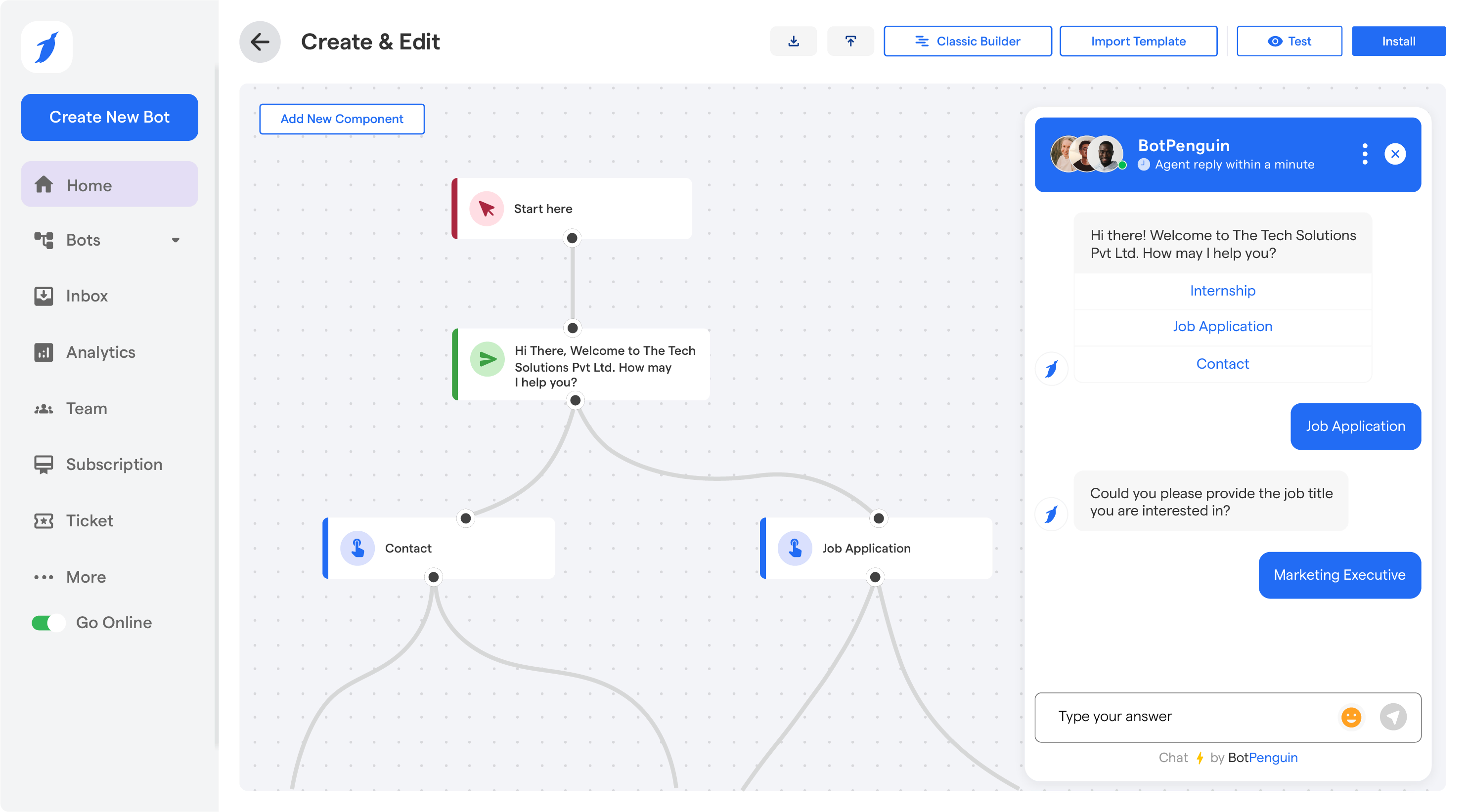
BotPenguin is a chatbot platform that provides businesses with a way to create and deploy chatbots on various messaging platforms, including Facebook Messenger, WhatsApp, and Telegram.
BotPenguin offers various features, including easy integration with existing systems, customizable chatbot templates, and natural language processing (NLP) capabilities.
As an integration, BotPenguin can enhance the functionality of other software applications, such as customer relationship management (CRM) software or e-commerce platforms. For example, a business using a CRM platform may integrate BotPenguin to automate customer interactions, such as answering frequently asked questions or scheduling appointments.
Similarly, an e-commerce platform may use BotPenguin to provide customer support, answer questions about products, and assist with the checkout process.
BotPenguin's integration capabilities are flexible, and they can be customized to meet the specific needs of a business.
With its intuitive interface and robust functionality, BotPenguin can help businesses streamline their operations and improve customer engagement.
Facebook Messenger
Facebook Messenger is one of the most popular messaging apps in the world.
By integrating chatbots with Facebook Messenger, businesses can provide customers with a convenient and personalized messaging experience.
Customers can use Facebook Messenger to chat with chatbots, place orders, and receive purchase updates.
WhatsApp is another popular messaging app that can be used for chatbot integration soluitions.
By integrating chatbots with WhatsApp, businesses can provide customers with a convenient and secure messaging experience.
Slack
Slack is a popular team communication platform that can be integrated with chatbots to automate workflows, streamline communications, and enhance team collaboration.
Shopify
Shopify is a leading e-commerce platform that can be integrated with chatbots to provide customers with a personalized shopping experience.
Chatbots can assist customers with product recommendations, order tracking, and customer support.
Magento
Magento is another popular e-commerce platform that can be integrated with chatbots to provide customers with a seamless and personalized shopping experience.
Chatbots can assist customers with product recommendations, order tracking, and customer support.
Salesforce
Salesforce is a popular customer relationship management (CRM) system that can be integrated with chatbots to automate workflows, streamline communications, and enhance customer support.
HubSpot
HubSpot is another popular CRM system that can be integrated with chatbots to automate workflows, streamline communications, and enhance customer support.
Zendesk
Zendesk is a popular customer service platform that can be integrated with chatbots to provide customers with a seamless and personalized support experience.
Trello
Trello is a popular project management tool that can be integrated with chatbots to automate workflows, streamline communications, and enhance team collaboration.
Google Analytics
Google Analytics is a popular web analytics tool that can be integrated with chatbots to track customer interactions, analyze performance data, and optimize the chatbot experience.
WordPress
WordPress is a popular content management system that can be integrated with chatbots to provide customers with a personalized and interactive experience.
Mailchimp
Mailchimp is a popular email marketing platform that can be integrated with chatbots to automate email campaigns, send personalized messages, and enhance customer engagement.
Stripe
Stripe is a popular payment gateway that can be integrated with chatbots to enable customers to make payments through the chatbot interface.
PayPal
PayPal is another popular payment gateway that can be integrated with chatbots to enable customers to make payments directly through the chatbot interface.
Twilio
Twilio is a popular communication platform that can be integrated with chatbots to provide customers with a seamless and personalized messaging experience.
By integrating chatbots with other tools and platforms, companies can enhance their customer experience, streamline operations, and stay ahead of the competition. Whether you want to automate workflows, provide personalized support, or facilitate communications, a chatbot integration can help you achieve your goals.
Future of chatbot integration
The future of chatbot integrations looks promising, with many exciting developments on the horizon. Here are some trends and predictions for the future of chatbot integrations:
Increased use of AI and machine learning
Chatbots already use AI and machine learning algorithms to understand better and respond to customer queries.
We expect to see even more advanced AI-powered chatbots that can understand natural language commands, learn from customer interactions, and personalize their responses based on customer preferences.
Integration with voice assistants
With the growing popularity of voice assistants like Amazon Alexa and Google Assistant, we can expect to see chatbots integrated with these platforms.
This will enable customers to interact with chatbots using voice commands, making the experience even more seamless and convenient.
Integration with augmented and virtual reality
As augmented and virtual reality technologies become more mainstream, we can expect to see chatbots integrated with these platforms to provide even more immersive and interactive experiences.
For example, customers could interact with chatbots in virtual reality environments, making it easier to visualize products and services before purchasing.
Integration with blockchain technology
Blockchain technology offers several benefits for chatbot integrations, including improved security, transparency, and data privacy.
In the future, we expect to see chatbots integrated with blockchain platforms to provide more secure and transparent transactions and data storage
Conclusion
Chatbot integrations have become essential for businesses looking to improve their customer experience, streamline their workflows, and stay ahead of the competition.
By integrating chatbots with other tools and platforms, companies can provide their customers with personalized and convenient experiences that enhance satisfaction and increase loyalty.
Throughout this guide, we've explored the benefits, types, steps, best practices, and case studies of successful chatbot integrations.
As we move forward, it's clear that chatbots will continue to play an important role in shaping the future of customer experience and business operations.
With advancements in AI, voice assistants augmented and virtual reality, and blockchain technology, the possibilities for chatbot integrations are endless.
In conclusion, businesses that embrace chatbot integrations and stay up-to-date with the latest trends and innovations will be best positioned to succeed in today's fast-paced and competitive marketplace.
By leveraging the power of chatbot integrations, businesses can unlock new levels of efficiency, customer satisfaction, and profitability.
Frequently Asked Questions (FAQs)
What is a chatbot integration?
Chatbot integration connects a chatbot with other tools and platforms to enhance its functionality and capabilities.
This can include integrating chatbots with messaging apps, social media platforms, e-commerce platforms, and customer relationship management (CRM) systems.
What are the benefits of chatbot integrations?
Chatbot integrations offer several benefits for businesses, including improved customer experience, increased efficiency, and reduced workload for customer service teams.
Integrating chatbots with other platforms allows companies to streamline workflows, reduce costs, and increase revenue.
What are some examples of chatbot integrations?
Some examples of chatbot integrations include integrating chatbots with messaging apps like Facebook Messenger and WhatsApp, integrating chatbots with e-commerce platforms like Shopify and Magento, and integrating chatbots with CRM systems like Salesforce and HubSpot.
What are some best practices for chatbot integrations?
Some best practices for chatbot integrations include choosing the right integration tools, defining clear objectives and metrics, ensuring seamless integration with other platforms, testing and optimizing the chatbot, and monitoring and analyzing performance data.
What are some future trends in chatbot integrations?
Future trends in chatbot integrations include increased use of AI and machine learning, integration with voice assistants, integration with augmented and virtual reality, and integration with blockchain technology.
How can I get started with chatbot integrations for my business?
To get started with chatbot integrations for your business, you should define your objectives, identify the tools and platforms you want to integrate with, choose the right integration tools, and work with a chatbot integration specialist to ensure seamless integration and optimization.

